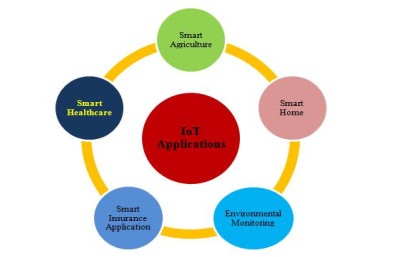Report on Flood Risk in Urban Slums and Implications for Sustainable Development Goals
Introduction: Urban Vulnerability and the SDGs
A recent study highlights a critical intersection of urban poverty, climate change, and disaster risk, with significant implications for the achievement of the Sustainable Development Goals (SDGs). The research reveals that approximately one-third of the 900 million people living in urban slums across the Global South are exposed to “disastrous” flooding. This situation directly challenges the progress of several key SDGs, most notably SDG 11 (Sustainable Cities and Communities) and SDG 13 (Climate Action), by exposing extreme vulnerabilities within densely populated urban centers.
Analysis of Flood Risk Exposure
The study, which mapped flood risk across 129 countries, provides critical data on the scale of the threat. Its findings underscore a failure to meet fundamental development targets.
- Scope of Risk: 33 percent of slum dwellers reside in areas historically impacted by “disastrous” flooding, defined as events causing severe disruption or fatalities.
- Geographical Hotspots: High-risk zones identified include northern India, Bangladesh, Nepal, Rwanda, northern Morocco, and coastal Brazil.
- Climate Change as a Multiplier: The report notes that climate change, in line with warnings central to SDG 13 (Climate Action), is exacerbating the problem. Intensified rainfall patterns are causing floods that exceed the traditional coping capacities of these communities.
Underlying Causes and Systemic Failures
The concentration of vulnerable populations in high-risk zones is a result of systemic issues directly related to core SDG principles.
- Poverty and Insecure Land Tenure: The issue is fundamentally linked to SDG 1 (No Poverty). Slums are often established on marginal, flood-prone land because it is the only affordable option for residents. The lack of secure tenure and financial resources prevents relocation, trapping families in a cycle of risk.
- Inadequate Housing and Services: The UN definition of a slum—lacking durable housing, clean water, or sanitation—points to a direct failure in achieving SDG 6 (Clean Water and Sanitation) and Target 11.1 of SDG 11 (access to adequate, safe, and affordable housing). These deficits are severely compounded by recurrent flooding.
- Insufficient Government Support: The inability of residents to relocate without government assistance or access to loans highlights a governance gap in protecting vulnerable citizens, a key component of building resilient and sustainable communities under SDG 11.
Conclusion: A Call for Integrated SDG Action
The heightened flood risk in urban slums is not merely an environmental issue but a critical development crisis. It demonstrates how the challenges of poverty (SDG 1), health (SDG 3), water and sanitation (SDG 6), urban planning (SDG 11), and climate change (SDG 13) are deeply interconnected. Addressing this requires an integrated approach focused on:
- Upgrading slum infrastructure to be climate-resilient.
- Implementing disaster risk reduction strategies centered on protecting the most vulnerable, as mandated by SDG 11.5.
- Integrating climate adaptation measures into urban poverty reduction programs.
Analysis of SDGs in the Article
Which SDGs are addressed or connected to the issues highlighted in the article?
- SDG 1: No Poverty – The article discusses the economic vulnerability of slum dwellers who cannot afford to leave high-risk areas.
- SDG 6: Clean Water and Sanitation – The article references the UN definition of slums, which includes a lack of access to clean water and sanitation.
- SDG 11: Sustainable Cities and Communities – The core focus of the article is on the living conditions in urban slums, housing safety, and exposure to disasters.
- SDG 13: Climate Action – The article explicitly links the increased risk of flooding to climate change and the need for adaptation.
What specific targets under those SDGs can be identified based on the article’s content?
-
SDG 1: No Poverty
- Target 1.5: “By 2030, build the resilience of the poor and those in vulnerable situations and reduce their exposure and vulnerability to climate-related extreme events and other economic, social and environmental shocks and disasters.” The article highlights that slum dwellers are poor, vulnerable, and exposed to disastrous flooding, a climate-related extreme event. It notes they lack the savings or assistance to relocate, underscoring their low resilience.
-
SDG 6: Clean Water and Sanitation
- Target 6.1 & 6.2: The article cites the U.N. definition of slums as “areas lacking… access to clean water, or sanitation.” This directly connects the living conditions of the 900 million people discussed to the targets of achieving universal access to clean water (6.1) and sanitation (6.2).
-
SDG 11: Sustainable Cities and Communities
- Target 11.1: “By 2030, ensure access for all to adequate, safe and affordable housing and basic services and upgrade slums.” The article’s central theme is the unsafe living conditions in slums, which are situated in floodplains, making housing inadequate and unsafe. The mention of 900 million people living in slums directly addresses the need to upgrade them.
- Target 11.5: “By 2030, significantly reduce the number of deaths and the number of people affected… caused by disasters, including water-related disasters, with a focus on protecting the poor and people in vulnerable situations.” The study’s finding that one in three slum dwellers is at risk of “disastrous” flooding, which leads to “severe disruption or death,” directly relates to this target.
-
SDG 13: Climate Action
- Target 13.1: “Strengthen resilience and adaptive capacity to climate-related hazards and natural disasters in all countries.” The article states that climate change is spurring more intense rainfall, leading to larger floods that communities find “difficult… to adapt” to, which points directly to the need for increased resilience and adaptive capacity.
Are there any indicators mentioned or implied in the article that can be used to measure progress towards the identified targets?
- Proportion of urban population living in slums (Indicator 11.1.1): The article provides a direct number for this indicator by stating, “Close to 900 million people across the Global South live in densely packed urban slums.” This figure serves as a baseline for measuring progress in upgrading slums.
- Number of people affected by disasters (Indicators 1.5.1, 11.5.1, 13.1.1): The article quantifies the population at risk, stating, “one in three slum dwellers is at risk of ‘disastrous’ flooding.” The study’s method of using satellite imagery and population data to map flood risk is a tool to monitor and measure the number of people affected or potentially affected by such disasters.
- Proportion of population with access to safely managed drinking water and sanitation services (Indicators 6.1.1 & 6.2.1): While not providing specific data, the article implies this is a key metric by referencing the UN definition of slums, which are characterized by a lack of “access to clean water, or sanitation.” Measuring access in these areas would be a direct indicator of progress.
SDGs, Targets and Indicators Table
| SDGs | Targets | Indicators Identified in the Article |
|---|---|---|
| SDG 1: No Poverty | 1.5: Build resilience of the poor and reduce their vulnerability to climate-related extreme events and disasters. | Number of people affected by disasters; the article identifies slum dwellers as a vulnerable population lacking the resources to relocate from flood-prone areas. |
| SDG 6: Clean Water and Sanitation | 6.1 & 6.2: Achieve universal and equitable access to safe drinking water and adequate sanitation. | Implied by the UN definition of slums cited in the article, which are areas “lacking… access to clean water, or sanitation.” |
| SDG 11: Sustainable Cities and Communities | 11.1: Ensure access for all to adequate, safe and affordable housing and basic services and upgrade slums. | Proportion of urban population living in slums (article states “Close to 900 million people… live in… urban slums”). |
| 11.5: Reduce deaths and the number of people affected by disasters, with a focus on protecting the poor. | Number of people at risk of “disastrous” flooding (article states “one in three slum dwellers is at risk”). | |
| SDG 13: Climate Action | 13.1: Strengthen resilience and adaptive capacity to climate-related hazards and natural disasters. | The difficulty for communities to adapt to larger floods caused by climate change-induced rainfall is highlighted. |
Source: e360.yale.edu







